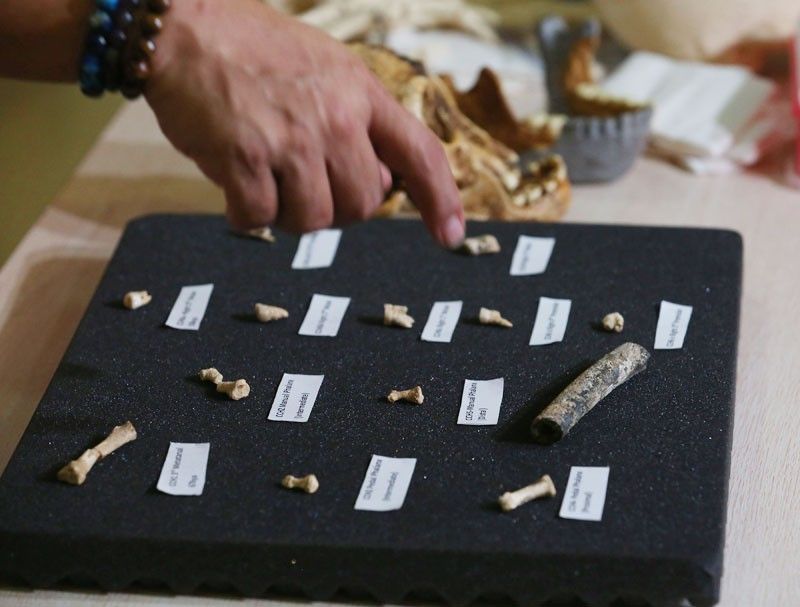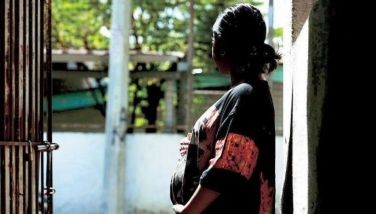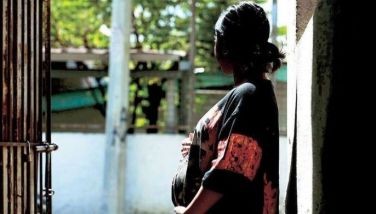Homo luzonensis bares challenges for Pinoy archaeologists

MANILA, Philippines — It took the discovery of a new human species that lived in Luzon around 67,000 years ago to put the spotlight on the present challenges being faced by Filipino archaeologists.
Eusebio Dizon of the archaeology division of the National Museum of the Philippines said the recent discovery of Homo luzonensis in Callao Cave in Cagayan underscores the potential of archaeological research in the Philippines.
“This adds to the story of humankind,” Dizon told “The Chiefs” on Cignal TV’s One News on Monday night. “(It shows that) we are a part of the process of whole human evolution.”
But with only a handful of Filipino archaeologists, Dizon admits that more needs to be done in order to paint the whole picture of prehistoric Philippines.
He cited numerous locations across the country, including in Metro Manila, that could have shed some light on how the early modern humans settled and – in the case of Homo luzonensis – died out.
“It’s not explored properly and most of these are destroyed for development,” he said.
Dizon said that in the 1990s, other countries in the region such as Indonesia and Vietnam had hundreds of archaeologists working in different sites.
“That was the idea when we founded the Archaeological Studies Program (at the University of the Philippines),” he said. “There was opposition, asking what will we do with so many archaeologists. Here is the work.”
Expensive
Archaeologist and UP professor Armand Salvador Mijares, who led the team that discovered Homo luzonensis, said they spent roughly P4 million just to recover the 13 feet, hand and bone fragments that were ascertained to belong to a previously undescribed species.
Each dig season, he said, would cost about P1 million, including costs for analysis of things they discovered.
And while UP provides support for his digs, Mijares said most of his funding came from grants from international organizations.
He said the publication of their findings is just the start of the long process of further understanding these long-lost cousins of modern humans.
“I will have to go back to Callao Cave. Because of the debate, people will now require more evidence to really secure it. Hopefully we get a better specimen… skull cap, mandible,” he said.
In their paper, the researchers, who also included Florent Détroit of the French National Museum of Natural History, said the Homo luzonensis has a mosaic of characteristics that resemble both the early hominid species and those close to modern humans.
While it was enough to establish that they were not similar to those that have been previously described, more details have eluded the researchers, including their physical stature and locomotor activities.
The archaeologists noted that the new species may have a significant impact on understanding the human evolutionary process, noting that some of the Homo luzonensis features were previously associated only with early hominid species in Africa.
Mijares said a major question is how these early humans arrived in Luzon, which is known to have always been separated from the rest of the Asian mainland.
He cited the possibility that the same species were the ones described in a separate research published last year, which described stone tools and butchered animal fossils discovered in nearby Kalinga that established the presence of prehistoric humans in the Philippines by as early as 709,000 years ago.
Mijares said the Homo luzonensis could be the same toolmakers described in the research, although they have yet to discover actual tools used by the new species.
Existing law
Dizon stressed the need to fully implement existing laws that protect cultural properties, including archaeological sites.
Among them is Republic Act 4846 or the Cultural Properties Preservation and Protection Act of 1966, which prohibits the exploration and excavation of archaeological or historical sites for the purpose of obtaining materials of cultural historical value without the prior written authority from the director of the National Museum.
The same law states that when excavators strike upon any buried cultural property, the excavation shall be suspended and the matter reported immediately to the National Museum.
A newer law, RA 10066 or the National Cultural Heritage Act of 2009, regulates anthropological research and archaeological exploration and excavation in the country.
It mandates that all explorations and excavations in caves, rock shelters and their vicinities that may have been used in the prehistoric past should be under the direct jurisdiction and supervision of archaeologists or other experts of the National Museum.
The law also said that excavations in caves, rock shelters and other areas by laymen are prohibited and all earth-moving activities must have the proper permit and clearance from the National Museum and monitored by its representatives.
- Latest
- Trending
































